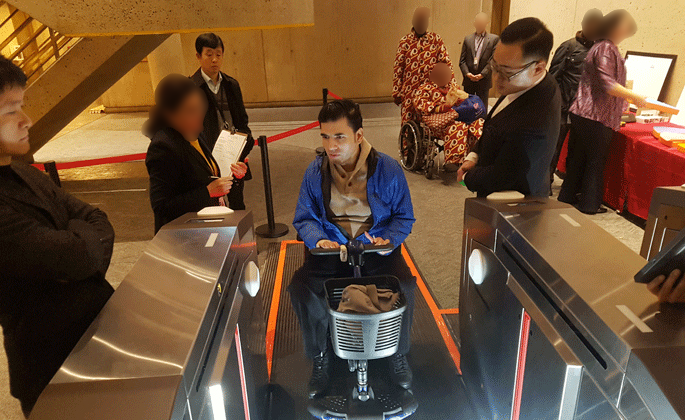New BART fare gates to be installed systemwide to enhance safety, improve access

Source: STraffic
$90 million Next Generation Fare Gate project
BART is moving forward with a historic purchase of brand-new fare gates to be installed systemwide as part of its latest effort to win riders back and overhaul safety in the system. The new fare gates will bring a new look and improved experience, offering state-of-the-art technology that will boost safety by reducing fare evasion, enhancing access for people in wheelchairs and those who bring bikes and strollers on BART, and optimizing the reliability and maintenance needs of the fare gates.
At the March 23, 2023, BART Board of Directors meeting, staff recommended the Board move forward with the first purchase of the $90 million Next Generation Fare Gate project. Staff recommended awarding up to $47 million to STraffic America to implement the project. BART staff will develop an installation timeline with STraffic and will stress-test the new fare gate design at a yet-to-be-determined station later this year. The project calls for all stations to have new fare gates by 2026.
“We want to deter fare evasion, modernize our aesthetic and reduce maintenance,” explained Sylvia Lamb, BART’s assistant general manager of infrastructure delivery, at Thursday’s BART Board of Directors meeting.
The transit agency’s board of directors received an update Thursday on the fare-reliant agency’s long quest to implement new gates that prove harder to jump and prove more reliable.
“There’s an appetite out there to go ahead and get this thing done,” said Bob Powers, BART’s general manager, adding the agency will soon be on a “path that’s going to get us to a systemwide replacement very, very quickly.”

Source: STraffic
Thursday’s presentation was informational only. At the second presentation, to be made on April 13, BART directors will seek the board’s approval for the $47 million fare gate contract.
“This is a very happy day, and I can’t wait to vote next month,” said BART Director Bevan Dufty.
To inform the endeavor, BART built and installed prototypes that it deployed in several stations in its system beginning in 2020, particularly around elevators, in an effort to make it easier for elevator users to tag in and out of the system. It has also retrofitted some of the older gates in an attempt to make them more resistant to fare evasion.
The agency has estimated that fare evasion could cost as much as $15-25 million in lost revenue every year, although the exact figure is difficult to pin down.
The new fare gates will look unlike any other of the current 700 fare gates in the BART system. While the new design has not yet been finalized, the gates will have clear swing barriers that will be very difficult to be pushed through, jumped over, or maneuvered under.
The next generation fare gates will not have the orange fins riders have become accustomed to. They will also be different than the new swing-style fare gates designed by BART staff and recently installed to enclose elevators into the paid area.
The new gates will be able to handle large crowds without slowing people down as they move in and out of stations while processing their Clipper cards. The gates will have advanced 3D sensors that are able to detect if someone is in a wheelchair or has a bike, stroller, or luggage with them, allowing for more time before the swing barrier closes. The gates will have LED lighting on the swing barriers and the pathway through the gate to help visually impaired riders. STraffic has worked extensively with members of the ADA community and is committed to continue this work while designing the BART gates.
“New fare gates will transform the rider experience and will deliver immediate improvements to safety and reliability,” said BART Board President Janice Li. “BART researched world-wide best practices in fare gate designs to help guide this pivotal purchase. I want to thank the local, state, and federal funding sources who have stepped up to support this impactful project. I am committed to seeing this project fully funded and fully implemented without delay.”
To date, BART has secured $73 million of the $90 million project, with funding from:
- BART Funds (Operating-to-Capital Allocations and Measure RR) $23M
- County Transportation Agency Funds $28M
- Federal Funds $15M
- State Funds $6.5M
In recommending the vendor, BART staff evaluated proposals from industry leaders and scored each proposal on their technical approach, qualifications, experience in delivering similar projects, and price. STraffic America, LLC offered the best value to BART and committed to subcontracting 11% of the work to Disadvantage Business Enterprises.
Allen D. Payton contributed to this report.
the attachments to this post:

STraffic automatic_fare_collection

STraffic automatic_fare_collection wheelchair


























